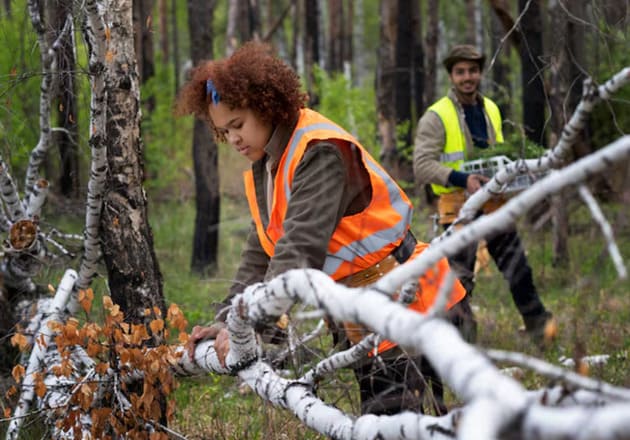
Urban areas are often filled with concrete, traffic, and constant development, leaving little space for nature to thrive. Yet, one of the most powerful ways to restore balance in cities is through tree restoration. Reintroducing and maintaining healthy trees in urban environments provides countless environmental benefits that improve not only the ecosystem but also the quality of life for residents.
1. Improving Air Quality
Trees are natural air filters. They absorb pollutants like carbon monoxide, sulfur dioxide, and nitrogen oxides while releasing clean oxygen into the atmosphere. In cities where vehicle emissions and industrial activities are high, restored tree canopies can significantly reduce harmful airborne particles. This leads to cleaner air, fewer respiratory problems, and a healthier urban population.
2. Reducing Urban Heat
Urban areas tend to trap heat due to concrete surfaces and lack of vegetation — a phenomenon known as the “urban heat island effect.” Trees help combat this by providing shade and releasing moisture through transpiration, which cools the surrounding air. Streets and neighborhoods with restored trees can be several degrees cooler than those without, reducing energy demand for air conditioning and improving comfort during hot seasons.
3. Managing Stormwater and Reducing Flooding
Paved surfaces prevent rainwater from soaking into the ground, often leading to runoff, erosion, and localized flooding. Trees help absorb and store rainwater through their roots, reducing the strain on city drainage systems. Their root systems also stabilize soil, preventing erosion and improving groundwater replenishment — crucial in areas prone to heavy rainfall.
4. Enhancing Biodiversity
Urban tree restoration creates habitats for birds, insects, and small mammals that would otherwise struggle to survive in city environments. A diverse canopy supports pollinators like bees and butterflies, which play a vital role in maintaining local plant life. By restoring trees, cities can rebuild small but essential ecosystems that contribute to overall biodiversity.
5. Capturing Carbon and Combating Climate Change
Trees naturally capture carbon dioxide from the atmosphere and store it as biomass, helping offset greenhouse gas emissions. In densely populated cities where emissions are high, large-scale tree restoration projects can make a measurable impact on reducing carbon footprints. Over time, this contributes to climate resilience and environmental sustainability.
6. Improving Mental and Physical Well-Being
While not strictly environmental, the connection between green spaces and human health is undeniable. Studies show that access to trees and nature reduces stress, improves mood, and encourages outdoor physical activity. Tree restoration not only benefits the environment but also fosters healthier, more vibrant communities.
Final Thoughts
Tree restoration in urban areas is more than an aesthetic upgrade — it’s a critical investment in environmental health. By improving air quality, cooling cities, managing water, supporting biodiversity, and storing carbon, trees bring balance back to concrete landscapes. As cities continue to grow, prioritizing tree restoration ensures a more sustainable and livable future for generations to come.
This post was written by a professional arborist at Tree Removal Largo FL. Robert Miller is the owner of Arbor Wise Professional Tree Care, a locally owned and operated tree service company that offers superb lawn care by the most experienced Arborists. Arborwise Tree Services is a tree removal company that offers stump removal, tree pruning, stump grinding, fertilization, and tree restoration. We have an extraordinary lawn care industry notoriety covering the Pinellas county area.